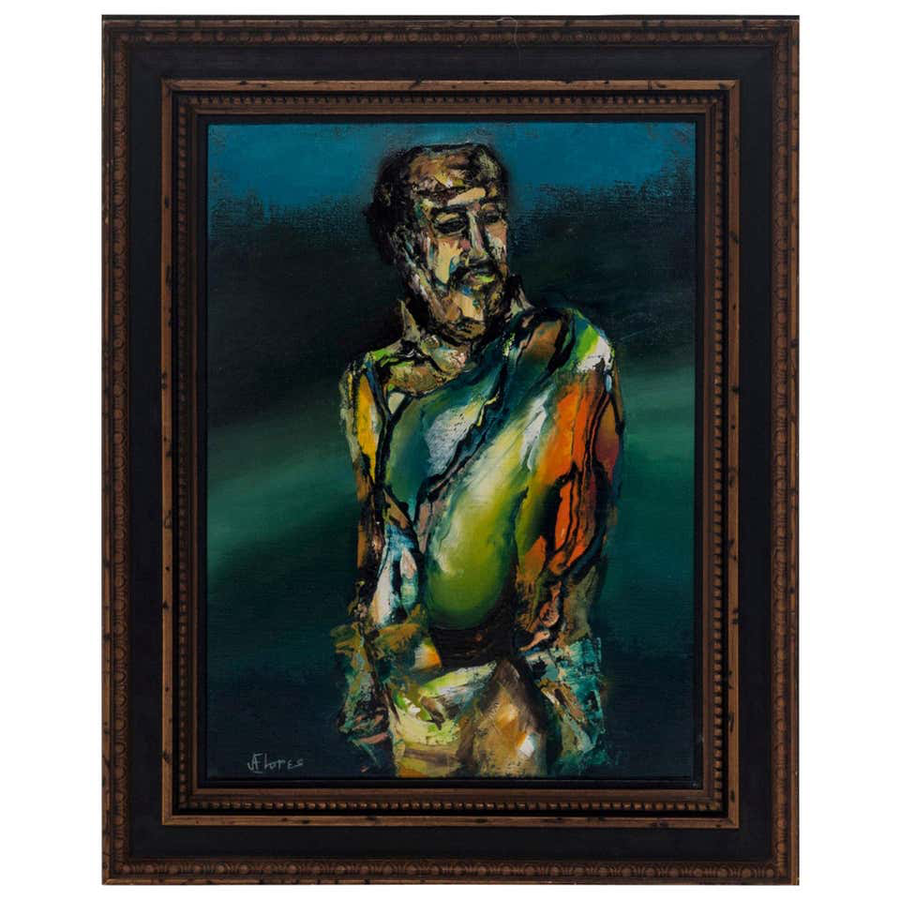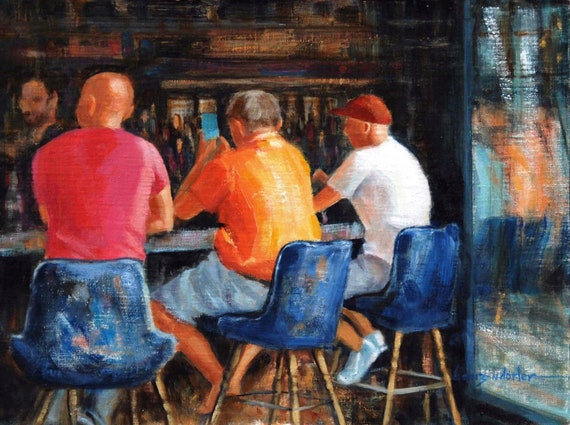The Evolution of Metaphorical Oil Painting: Understanding Its Historical Significance and Modern Interpretations
The evolution of figurative oil painting serves as an engaging lens via which to examine the interaction between imaginative expression and historic context. Contemporary musicians, drawing from this rich heritage, are now reinterpreting the human number in methods that test typical narratives.
Origins of Metaphorical Oil Painting
The beginnings of metaphorical oil painting can be traced back to the very early Renaissance in Europe, particularly in the 15th century. This period noted a significant departure from the level depictions and rigid types particular of middle ages art. Artists began to check out naturalism, stressing the human number and its emotional expression. The advancement of oil paint enabled better depth of color and detail, improving the realistic look and vibrancy of their job.

In this transformative period, numbers were commonly illustrated within contextually rich environments, showcasing not just their physical qualities however also their psychological states. Leaders such as Jan van Eyck and Titian used the tool's adaptability, employing layering strategies to attain brightness and texture. This technology promoted the portrayal of intricate textiles and the subtleties of skin tones, adding to the development of portraiture and narrative scenes.
In Addition, the Renaissance emphasis on humanism fostered an admiration for distinctiveness, which consequently affected musicians to create even more vibrant and relatable numbers - figurative oil painting. As a result, metaphorical oil painting became a powerful lorry for storytelling and psychological engagement, laying the foundation for future creative movements and designs
Key Historic Motions
Substantial historical activities have formed the evolution of metaphorical oil painting, each adding distinct ideologies and methods that increased the medium's opportunities. The Renaissance noted a zero hour, highlighting realistic look and the human form, with artists like Leonardo da Vinci and Michelangelo pressing the boundaries of anatomical precision and perspective. Following this, the Baroque age brought significant contrasts of light and shadow, exhibited by Caravaggio, who infused spiritual motifs with intense emotionality.
The 19th century presented Romanticism and Realistic look, where musicians such as Delacroix and Courbet challenged classic ideals, focusing on private expression and day-to-day life. The advent of Impressionism additionally changed the medium by emphasizing the impacts of light and shade, bring about a separation from traditional representation.
In the very early 20th century, motions like Expressionism and Cubism redefined figurative paint through abstraction and the expedition of emotional depth. Each of these motions not only showed the social adjustments of their times yet additionally prepared for contemporary interpretations. The interplay between these historical movements has created a rich tapestry of designs and viewpoints, influencing modern artists in their pursuit of capturing the human experience on canvas.
Techniques and Products Advancement

Throughout the Baroque duration, methods such as chiaroscuro and sfumato arised, improving the psychological resonance of metaphorical compositions. Musicians began to trying out glazes and impasto, controling texture and brightness. By the 19th century, innovations like using pre-mixed paints in tubes revolutionized availability, allowing artists to repaint en plein air and capture the fleeting results of light.
The 20th century saw the intro of artificial pigments and mediums, which broadened the scheme and changed the uniformity of oil paints. Moreover, the exploration of brand-new application strategies, such as palette knives and brushes of differing stiffness, further varied imaginative expression. Collectively, these improvements mirror the evolving partnership between materials, methods, and the imaginative vision inherent in figurative oil painting.

Contemporary Interpretations
Contemporary interpretations of figurative oil painting reflect a dynamic dialogue in between practice and technology, where musicians test developed norms and check out diverse themes. This advancement shows up in numerous means, as contemporary artists blend timeless strategies with modern-day ideas, commonly attending to social, political, and personal narratives.
Several experts attract motivation from historical jobs, yet they instill their pieces with contemporary viewpoints, using the human form as a lorry for discourse on society, identity, and sex. Artists increasingly experiment with abstraction, distortion, and combined media, which enables for a more comprehensive analysis of the number and its context.
Moreover, using vivid shade combinations and unconventional make-ups often serves to interfere with standard seeing experiences, prompting vital engagement from target markets. This shift in emphasis extends beyond visual appeals; it mirrors a growing recognition of the complexities of human experience in an interconnected globe.
As metaphorical oil painting remains to develop, it continues to be an important medium for checking out the subtleties of contemporary life, personifying both a respect for heritage and a commitment to dynamic thought. The result is an abundant tapestry of expression that resonates with the complexities of the modern-day human condition.
Effect On Modern Art
The Going Here effect of metaphorical oil paint on modern-day art is extensive, as it has constantly influenced a myriad of imaginative activities and practices throughout the 20th and 21st centuries. From Expressionism to Surrealism and beyond, the exploration of the human figure has stayed a main motif, permitting musicians to share complex emotions and narratives. This emphasis on figurative representation has resulted in a re-examination of conventional methods, causing cutting-edge strategies that mix realistic look with abstraction.
In addition, modern musicians have actually welcomed metaphorical oil paint as a way to resolve political and social concerns, making use of the tool to test understandings of identification, society, and sex. The resurgence of interest in metaphorical job in recent years reflects a longing for link in a significantly electronic world, where human experience and feeling are extremely important.
Furthermore, the dialogue between metaphorical oil painting and modern art is evident in the jobs of i loved this artists such as Kehinde Wiley and Jenny Saville, who attract on historical references while instilling their pieces with contemporary importance. Eventually, figurative oil paint remains to shape and redefine modern-day creative expression, underscoring its long-lasting importance in the art globe.
Final Thought
The development of metaphorical oil painting highlights its historic significance and versatility throughout various artistic motions. Inevitably, figurative oil paint continues to be an important medium for discovering the human experience, reverberating profoundly in today's electronic landscape.
The evolution of metaphorical oil painting serves as resource an engaging lens through which to examine the interplay in between imaginative expression and historic context.Considerable historic activities have actually shaped the evolution of figurative oil painting, each contributing special ideologies and strategies that expanded the medium's opportunities.As historic activities formed the trajectory of metaphorical oil paint, the products and strategies used by musicians have actually also undergone significant changes. figurative oil painting.The effect of figurative oil painting on modern art is profound, as it has continually inspired a myriad of artistic activities and techniques throughout the 21st and 20th centuries.The advancement of metaphorical oil painting highlights its historical significance and adaptability throughout numerous creative motions